Growing marijuana with homemade compost
List of contents
What is compost?
Compost is an excellent organic fertilizer resulting from the controlled decomposition of any organic, solid or semi-solid material. Several microorganisms are responsible for breaking down organic waste to turn it into a digestible product for marijuana plants .
Compost can be bought in different states: while in nature the creation process takes place by itself, if it's homemade, in addition to obtaining a good fertilizer for our marijuana plants, you recycle organic waste, thus contributing to the planet conservation.
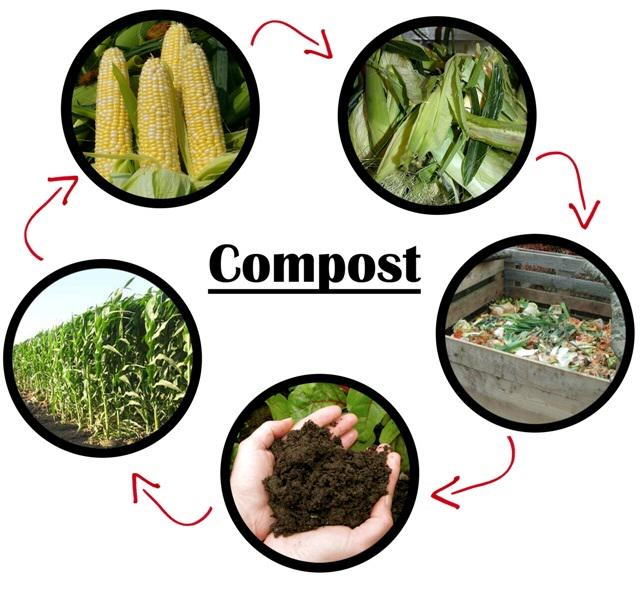
How to use compost
Using compost in a pot for growing marijuana outdoors: for marijuana plants, the right proportions are one part of compost for every three parts of soil light in nutrients. In long outdoor crops, you can make a second application during the last transplant, as long as the compost is mature, otherwise it shouldn't be buried getting in contact with the trunk and roots.
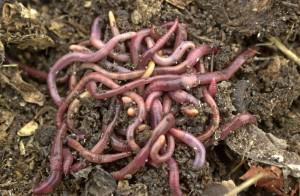
Using compost in a pot indoors. The same proportions as outdoor containers. It is very important to make sure that the compost is ripe and free from fungi, fruit flies or parasites, for the growing tent conditions are optimal for marijuana pests.
Using compost in-ground. If you are lucky to have a garden where you can grow marijuana, compost can be your best ally. Use it at least three times a year with this proportion: 2 kilos of compost per m2. The first application can be done after harvesting marijuana. The compost can be fresh -just 2 or 3 months old-, and soil microorganisms will do their decomposing job. In the right conditions, the worms will be delighted with such delicacy. The second application will be a few weeks before seed germination. The compost should be mature and pathogen-free, mixed with soil from the garden until it's consistent. The third application is done when the plant is at least a couple of months old, the compost must be mature and should avoid direct contact with the trunk and roots.
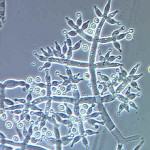
Using compost in guerrilla crops. In this case, ease in the transport of materials is greatly appreciated. We can find compost in the same forest or field where we are discreetly growing our marijuana plants. As done at home, the compost is sieved and the resulting compost is applied. Due to the leachate resulting from the rain, it may not contain many micro and macro nutrients like homemade compost would, but it still provides the soil with a structure, reducing the need of watering.
Using compost as mulch. Applying a layer of very ripe compost to the soil surface will reduce weed growth competing with your marijuana. It will also work as an organic fertilizer, preventing solar radiation from destroying bacterial life in the soil.
Compost tea. By performing a leachate of the compost we obtain a rich liquid organic fertilizer. One way to do this is by filling a cloth bag with a kilo of compost and then pouring it into a bucket full of water , letting it soak for 12 hours. Watering may be done directly, while if the soaking time is over 12 hours the mixture should be diluted with water before applying it to the plants.
Advantages of compost
Using compost has many advantages, so we shold know the strenghts of this substrate to get the most of it.
- Given its 100% organic origin, it favours the development of the organoleptic properties of marijuana plants.
- It acts as organic soil recovery, improving the soil health while increasing and diversifying its bacterial life, which is very beneficial in poor or devastated soils.
- It reduces the need for fertilizers as it provides trace elements, macro and micro nutrients/elements that nourish the marijuana plant, as well as further enhancing the assimilation of nutrients when irrigating with liquid organic fertilizers.
- It allows greater water retention. This quality is very beneficial in crops where marijuana suffers from water stress, such as in Guerrilla cultivation.
- Compost that is over a year old (mulch) prevents weed growth as well as protecting the soil from strong solar radiation that destroys part of the bacterial life.
- Apart from nourishing the soil in its early stages, it promotes the development of earthworms, creating a great vermicompost (this will be discussed thoroughly in another post).
- Approximately 40% of the waste in our bin bag is organic, and it usually goes to the dump, where, if not dealt appropriately may end up polluting the soil and water, as well as producing greenhouse gases.
- By making our own compost, we almost close the circle of the plant, by turning the waste problem into a useful resource to fertilize our gardens.
Types of composters
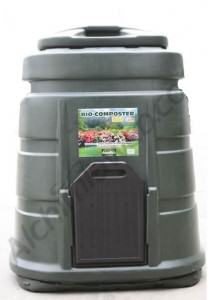
We can compost anywhere, depending on the available space and our aesthetic requirements. Even if you live in an apartment you can have a positive and active attitude towards the issue of waste. We present you here some options.
Commercial composter. No doubt it's the fastest and most convenient of all. They are usually made of plastic, there is an access from the top side to insert the waste. At the bottom there is a door from where you can collect the mature compost. With this type of composter you avoid problems with rodents attracted by the waste. Its design is ideal for composting at home without sacrificing aesthetics.
Drum/Barrel composter. If you have a spare drum or barrel, then you have a composter. You only have to make some holes to start composting. A door at the bottom should be made in order to access the compost.
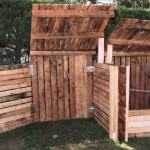
Wooden or brick compost bin. If you have got the time and materials to build a wooden or brick composter, it can be a very rewarding experience. You can build it with a top door for an easy waste disposal. We recommend to build the front with wooden boards, for they can be removed individually. This way, supervision and maintenance is easier.
The size depends on the available space, although 1 m3 is recommended. If we have sufficient space and a lot of waste we can also build two or more composters, which will enable you to have compost at different stages of maturation.
Mesh composter. A simple wire mesh can be converted into a composter in a few minutes -you only have to join the ends and secure it to the ground. This type of composter allows a good ventilation, so we must watch humidity and temperature so that the decomposition process doesn't stop. This compost bin is ideal for decomposing garden waste.
The composter is placed in a shady area, sheltered from strong winds, near a water source and with sufficient space to be able to turn it over and extract the waste. It is important to protect it from rain so the nutrients are not leached. As for building a composter, without a doubt time and experience will help you improve the design in order to suit your needs -use your imagination and long life to recycling!
Ingredients to make compost
During the preparation of compost, we can see many life forms involved in the process, such as insects, worms, bacteria and fungi, which make the compost a living element. To preserve the natural cycle you should avoid using chemical fungicides or any other element that may put the micro-organisms at risk.
The needed ingredients to make compost are water, oxygen, nitrogen and carbon.
Water. The mixture should be moist but not wet. One way of checking humidity is squeezing a bit of mixture with your hands, and if the mixture drips, then it is too moistened. However, if it doesn't drip at all, humidity is too low. Ideally, a few drops should appear and your hand should get slightly damp -that is the optimal moisture level.
Oxygen. The micro-organisms responsible for decomposition die without oxygen. If the mixture is too wet and pasty, the oxygen will hardly penetrate it. For the oxygen to reach throughout the mixture we have to turn it over from time to time. The more you turn it over, the more oxygen gets into the mixture, ensuring the life of microorganisms and facilitating an odour-free decomposition.
Nitrogen. It provides proteins for microorganisms, and it is also called green material or greens. It includes kitchen waste, fruits, vegetables, grass clippings, manure, coffee grounds, tea bags, green leafs and pruning wastes.
Carbon. Also called brown material or browns, are remains of dried plants (leafs and stems), straw, wood ashes, cardboard, paper, sawdust and hair. Using paper or cardboard with coloured inks is not advisable. Scrap wood, ashes and sawdust should be free of oils, paints or other chemicals that may alter the quality of the compost.
To make compost, it's not recommended to use: salted preserves, diseased plants, dog or cat feces, fat or any material containing chemicals. The remains of fish, meat, milk, oil or sauce can be added to compost, although it is not recommended, at least until you have wider experience and are more acquainted with it, as this kind of waste attracts rodents as well as causing smell problems if the fermentation and decomposition process is not stable.
Compost preparation process
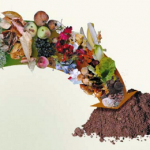
Before adding waste to the compost it is recommended to shred or cut it into pieces, not exceeding 5 cm. This speeds up the decomposition process, improving aeration and simplifying the composting process.
There are several formulas for making compost -ideally, the mixture should be homogeneous in all the ingredients, keeping a stable humidity and aerating it at least once a week. In any case, it is interesting to experiment, writing down notes on the obtained results as we get some practice.
A commonly used ratio is ¾ of brown material (carbon) and ¼ of green material (nitrogen). It is equally valid to mix two parts of dry material and one part of moist material. In this case you need to monitor it carefully and turn it at least once a week.
If the composter is not in direct contact with the ground you should start with a layer of soil to supply the heap with microorganisms. Then add a 15 cm layer of brown material for every 10 cm of green material.
For each layer added to the heap in the composter, we must add water, although avoiding flooding the mixture. If too much water is added, this can be amended by adding dry leafs and turning the heap upside down.
To supply minerals, you should scatter some untreated wood ashes every two layers, while adding a little lime to control the pH.
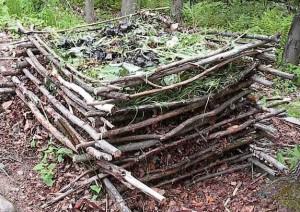
Then, mix up the heap to let it work.
In order to speed the process, some activators can be used. These can be bought or you can also use nettle slurry as an activator. Those with no qualms may choose to use human urine diluted in water. If you choose to do so, it's advisable not to use medical drugs. You can also use herbivore dung as an activator, but it is not recommended for home composters. Unless you have experience, it is better to use it in composters far from home.
If food waste is added to the heap, you should cover it with dry leaves or pieces of cardboard or paper. If you leave it exposed, flies may lay eggs on it and there is a risk of infestation with black fly on the substrate for cannabis.
When decomposition begins, the temperature can be around 50-60 degrees, and it should never be over 70°C or below 30°C. If we maintain these temperatures by watering the heap and turning it upside down regularly, the decomposition process does not stop.
Humidity should be under control, by ensuring that the heap is neither dry nor saturated. You can water it every 3 or 4 days depending on weather conditions.
By turning it regularly you oxygenate the heap while speeding up the composting process.
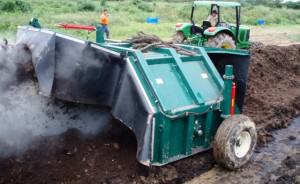
If the composting process is successful, it will be ready in 3-6 months. If you haven't turned it upside down enough, the process can last one year. The best time to collect the compost is spring and autumn.
We know when the compost is ready if it has an earthy odour and it's dark, materials are no longer recognisable and the temperature has dropped to 20°C approx. At that moment we can use a wire mesh with 1 cm holes to sift the mixture, while the remaining material that did not pass through the sieve is returned to the composter.
The harvested compost needs aerating for 10-15 days in order to cure (finish the process), losing moisture. It also needs that microorganisms such as bacteria that can be found in other products like Bactohemp cease their activity. Once it is mature and dry, it can be stored in large sacks or hermetic-sealed bags. It is important to check for any excess moisture as it could rot.
As a precaution measure, you can test it before use. Try sprouting 10 lentils, of which at least 8 or 9 should sprout. If they don't sprout, then perhaps the compost is not appropriate.
Solutions to compost problems
Here are some of the common problems that can occur during the process of composting. Find out how to solve them below:
- Bad smell. It may occur because the mixture contains too much nitrogen-rich material or is too wet. In both cases you should add cardboard, dry leafs or paper. Bad smell can also come from lack of oxygen. In this case, just turn the heap upside down to solve the problem.
- Ammonia smell. When the compost mixture is too big, its weight can compact the heap, producing ammonia odour.
- The pile doesn't heat up. This is usually due to lack of materials rich in nitrogen. In addition to adding green material, you can solve the problem by adding nettle slurry or water with liquid growth fertiliser . The pile won't be heated without oxygen and excess or lack of water.
- Flies and other insects. They won't harm your compost but you can avoid them by covering kitchen waste with dry leafs, straw or sawdust. Ants can be avoided if we grow lavender near the composter.
- Excess or lack of moisture. This can be solved by adding dry leafs or water as needed. Then turn the heap upside down vigorously.
Thank you very much for reading this post!































































